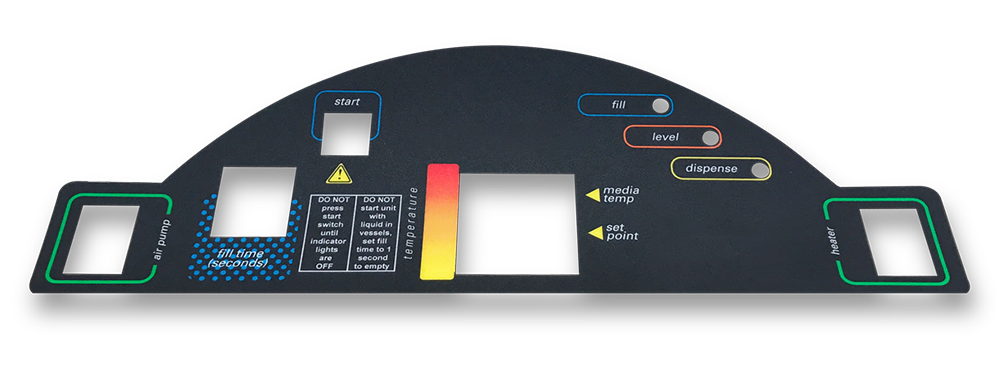How Personalized Graphic Overlays Improve Interaction and Brand Recognition
How Personalized Graphic Overlays Improve Interaction and Brand Recognition
Blog Article
Recognizing Exactly How Graphic Overlays Job to Boost Your Innovative Projects
Graphic overlays serve as an essential element in the realm of imaginative projects, improving both aesthetic interaction and audience interaction. The effective integration of these overlays calls for careful consideration of layout concepts and objectives.
What Are Graphic Overlays?
Graphic overlays are visual elements that are put on top of a base image or interface to enhance communication and customer experience. They offer numerous objectives, consisting of supplying added details, directing customer communication, and enhancing aesthetic appeal. Typical applications of graphic overlays can be discovered in electronic user interfaces, advertising and marketing, and educational products.

Graphic overlays are frequently developed utilizing style software, allowing designers to manipulate transparency, color, and size to accomplish the wanted result. Recognizing how to successfully apply visuals overlays is crucial for designers aiming to raise their imaginative tasks.

Benefits of Utilizing Graphic Overlays
Utilizing graphic overlays can dramatically boost the performance of visual interaction across various mediums. Among the main benefits is the ability to share intricate details succinctly. By layering graphics, message, and pictures, overlays help with the discussion of information in a much more absorbable layout, making it much easier for audiences to grasp vital concepts rapidly.
Furthermore, graphic overlays can enhance visual appeal, accentuating certain aspects within a design. This is specifically useful in advertising and marketing and advertising, where capturing the customer's interest is paramount. The critical use shades, forms, and typography in overlays can develop a engaging and natural aesthetic narrative, boosting brand acknowledgment.
Additionally, graphic overlays give flexibility in style. They permit creators to adapt web content for different systems without going back to square one, ensuring uniformity across various networks. This flexibility is critical in today's digital landscape, where content needs to be maximized for diverse devices and styles.
Sorts Of Graphic Overlays
When thinking about the various kinds of visuals overlays, it is important to recognize their diverse applications across various markets. Graphic overlays can be classified primarily into three types: functional, ornamental, and informational.
Functional overlays are developed to boost the use of a product. Frequently located in digital tools, these overlays typically supply tactile responses with elevated switches or distinctive surface areas, boosting customer communication. They can likewise act as a safety layer, protecting the underlying components from deterioration.
Ornamental overlays concentrate on aesthetic enhancement, allowing brands to share their identification with lively designs Click Here and personalized graphics. These overlays prevail in packaging, marketing, and point-of-sale materials, where aesthetic charm is crucial for attracting consumers.
Educational overlays, on the other hand, are used to convey essential data or guidelines. They can be seen in applications such as signs, individual manuals, and educational graphics, where quality and readability are extremely important.
Each kind of graphic overlay offers a distinct purpose, contributing to the total efficiency of creative tasks while dealing with specific demands within different industries. Understanding these differences is vital for choosing the appropriate overlay for your job.
Best Practices for Execution
To ensure the effective implementation of graphic overlays, it is important to develop a clear understanding of the job's objectives and the certain demands of the end-users. Begin by performing thorough research study to determine the target market and their choices, as this will certainly notify design options and performance.
Next, create an in-depth plan that details the overlay's layout, function, and combination process. This plan ought to include interface factors to consider, ensuring that overlays enhance instead than block the user experience - Graphic Overlays. Take into consideration the visual pecking order and maintain uniformity in style elements, such as shade plans, fonts, and icons, to promote brand name comprehensibility
Checking is crucial; gather comments from a representative sample of customers to determine possible problems and areas for renovation. Iterate on the style based upon individual input and efficiency data. Additionally, guarantee compatibility throughout various gadgets and systems to take full advantage of availability.
Tools for Producing Overlays
Creating efficient visuals overlays needs the right tools to equate layout concepts into practical applications. Various software application and platforms are offered, each customized to certain requirements and ability degrees.
Adobe Photoshop and Illustrator are market criteria, providing substantial capabilities for producing and manipulating overlays. These tools supply innovative attributes such as layer management, see it here blending settings, and vector graphics, allowing developers to develop intricate and top notch overlays.
For those looking for an extra straightforward approach, Canva and Figma are excellent alternatives (Graphic Overlays). Canva's intuitive interface allows users to create overlays rapidly using pre-designed templates, while Figma assists in collective style in real-time, making it suitable for groups
Furthermore, open-source alternatives like GIMP and Inkscape provide robust functionalities without the associated prices of exclusive software program. These devices permit adaptability in layout and can suit numerous file click to read formats, ensuring compatibility across different platforms.

Verdict
In final thought, graphic overlays serve as powerful tools for enhancing imaginative tasks by giving aesthetic clarity, aesthetic appeal, and brand consistency. By recognizing the basic concepts and benefits linked with graphic overlays, makers can dramatically improve the high quality and performance of their aesthetic interactions.
Graphic overlays serve as a pivotal element in the world of imaginative tasks, enhancing both visual interaction and audience interaction.Graphic overlays are usually created using style software program, enabling developers to manipulate dimension, transparency, and shade to achieve the preferred effect.Furthermore, graphic overlays can increase visual appeal, drawing focus to details elements within a style.Additionally, visuals overlays provide versatility in style.In conclusion, graphic overlays serve as effective devices for improving innovative jobs by offering visual quality, aesthetic appeal, and brand name uniformity.
Report this page